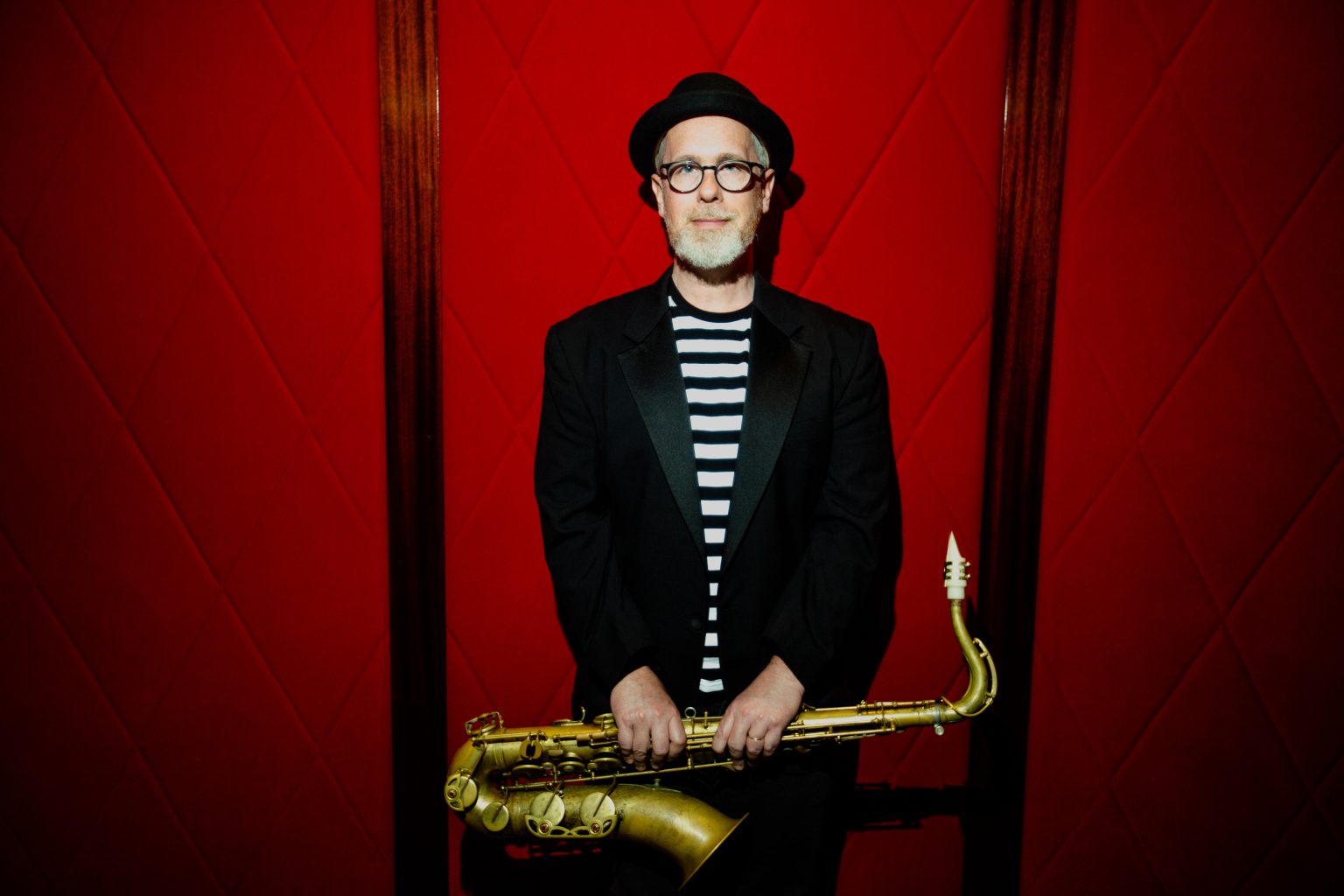Over the past decade saxophonist, arranger, and producer Max Abrams has been touring around the world with country crossover phenoms The Mavericks, 150 cities a year on average, he tracks his journey in photos. It’s only natural Max is a professional musician and amateur photographer, since his father was a professional photographer and an amateur musician. Each day he opens the tour bus doors to see what there is to see, he thinks of his father.
Some days are cathedrals in Cologne, Germany, some days RV park signs in Marfa, Texas. But each photograph in his new book Seeing Things contains a memory, and together the images capture the sum and substance of life as a musician getting off the bus in a new place every day.
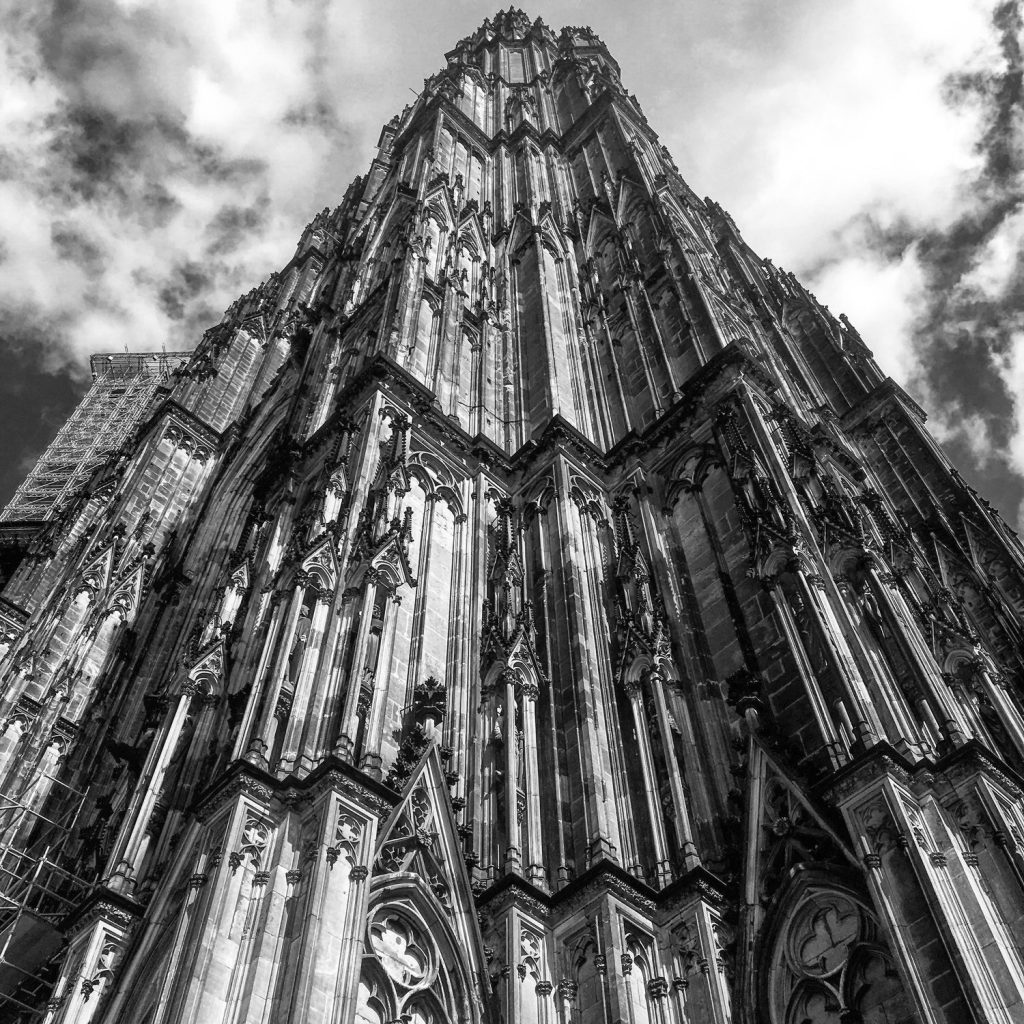
“I’m a little ashamed to admit; it has more to do with interband competition,” he says when asked if the opening of the Prevost doors was his eureka moment when he realized his interest in photography. “Our tour manager is a lovely guy, and he was sort of the one that was responsible for rebranding The Mavericks. He really understood the importance of image and kind of just how we’re portrayed in media. So he’s got great aesthetics, and he would go out and he would take these really great pictures and post them on Instagram. I’m not a competitive person; it’s just not really in my nature. I saw his stuff and this little light bulb went off. We would head out in these wonderful spots that we get to play. When you think of things or places that are interesting, you’ll think about Paris or London. But if you’re looking for things in photographs, you can find incredible scenes in Iowa or Nebraska. We would have these little interband competitions to see who got the best photo that day.
“There’s a strong correlation between any art and aesthetics. I would not always win; Max Malo, Raul’s son, would get great shots at times. The other thing I found out is that it’s a great time to edit photos when you’re driving from, you know, Saskatchewan to Ottawa in Canada. Because you can’t practice saxophone on a tour bus; you’ll knock your teeth out. So photo editing turned into this little zen hobby.”
Emblematic subjects fill the pages of Seeing Things: a vintage Cadillac Fleetwood in Detroit, a Fidel Castro speech painted at the La Guarida staircase in Havana. Of equal artistic import, so do the wonderfully weird. Photographers see the world both literally and abstractly, through the filter of pure presence. And presence he has honed to a fine art as the kind of musician who connects with fans before he takes the stage at the Mother Church of Country Music. Anyone can see a thing of beauty, but to see a mundane thing beautifully? Take for example an angel wing on page seven that looks like it once belonged to a colossal statue. The stories it could tell. “There’s an old church in Denmark, and you can walk up and into the tower, but there is no elevator. So you’re walking for a long time. It’s very tall. You’re going up the spiral staircase and there’s all these little nooks, and in one of these nooks was just this angel wing sitting there. It was a surreal moment.”
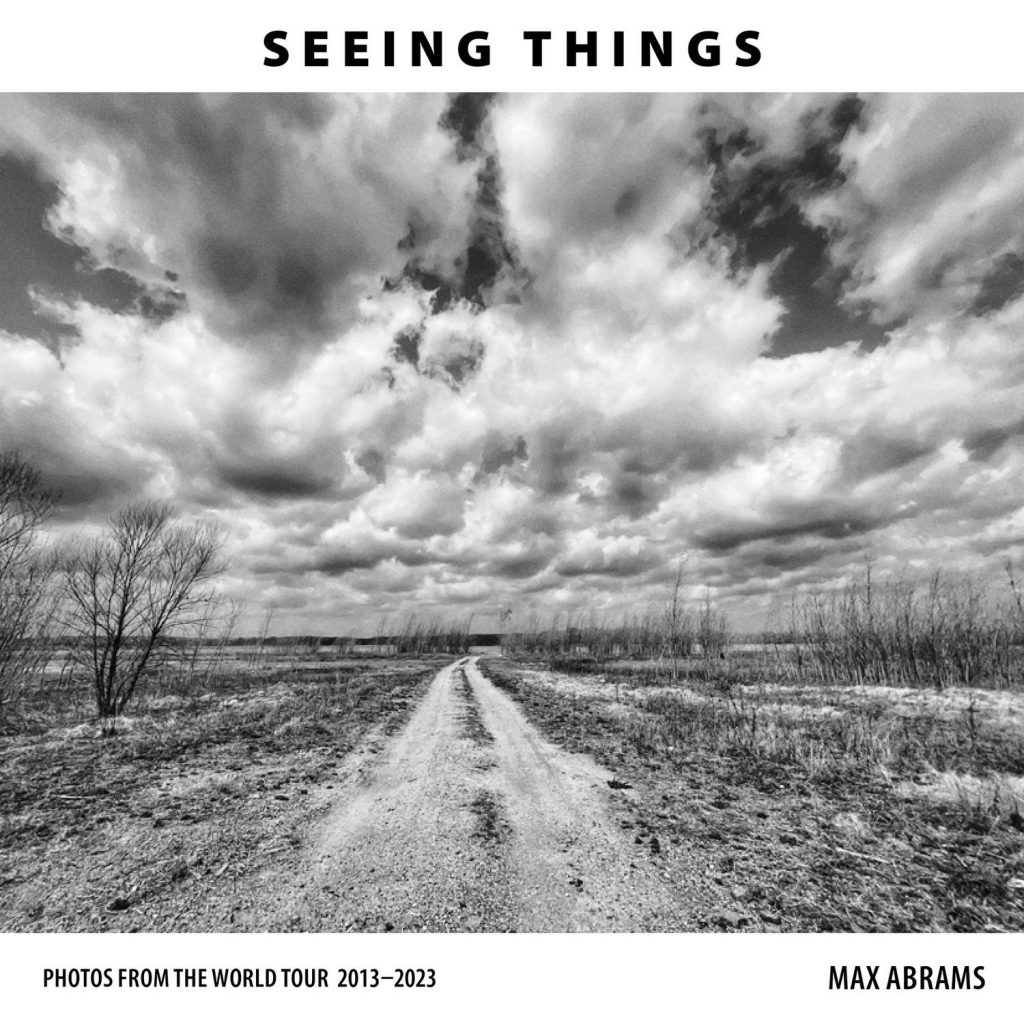
The medium of black and white tends to emphasize texture and create a mood. “When you subtract color, you add attention to form. And I was sitting on just sort of a firehose of images. The band is unbelievably lucky in that we have audiences from the Arctic Circle in Norway, all the way to Vancouver, Canada, and every place in between. So just always shooting and shooting and shooting. I think the photograph that got me thinking about the black and white is a shot in the back of that book from a beach in the Arctic Circle. For some reason I thought it was a more compelling image in black and white. That got me thinking about the images that I’d caught in the course of touring with the band.
“The first book was color, really more of a pure travelogue. There was this moment I got out of the bus in North Dakota, and there was a woman walking two pink poodles in a park in a Flying J parking lot. I was like, ‘You have to stay right where you are. Do not move.’ There’s images that lend themselves to that. There is something about the abstract sometimes where form takes precedence over color.” With all the editing and decision making that goes into a shot, sometimes traveling for a long time as a touring band is a luxury. Max is up early and devotes his mornings to the editing process and determining what makes the image sing. “Sometimes that’s surprising, just looking for sort of these minute differences between blacks and grays and whites, and sharpness and all the variables.”
A cupcake on page 11 takes on different forms all in one moment. At first glance you might think you’re looking at a nautilus figure, which you might miss in color. “I was at the dry cleaner,” Max says regarding a poodle on page 34 with hair as tall as Don King’s, while a cute chicken gives a cross expression on page 48. “We played this festival in Tonder, Denmark. There was this paddock of miniature horses that all had these hilarious 13-year-old boy haircuts. All these horses look like an emo band,” he says of page 49. “50 is probably my favorite image in the book we recorded.” Outside a studio in Santa Fe, where they did part of the last Mavericks record, old television sets and computer monitors are piled up in otherwise vast natural beauty. A dystopian wasteland scene that wouldn’t look out of place in Tom Petty and the Heartbreakers’ 1983 video for “You Got Lucky.” He continues, “70 is fun. That’s at the City Museum in St. Louis. And there’s something so whimsical and surreal about this chicken wire tower.”
When I came across a photo taken in Boston, given my own experience with the city, I then wondered if there were places Max wasn’t expecting to fall in love with but did. “I was not expecting to enjoy the Dakotas, North and South Dakota, or Montana. Montana especially, there’s this predicament you find yourself in when you’re touring a lot, which is that it takes a very long time to get from point A to point B sometimes.”
The rural Midwest, where you drive 60 miles an hour and see nothing but corn for 45 minutes, can be mind-numbingly boring or dreamlike in its monochromatic pallor depending on your perspective. But if you’re paying attention, you’ll eventually notice town-by-town subtleties slowly unfolding at a speed you can witness. “The beauty of what we do is that we literally drive across the country. We start in Nashville and we’ll drive through the Dakotas. So you’re sort of seeing these changes in the landscape, changes in the architecture, changes in the sky, in the topography. If you’re flying, these things are apparent, but it’s too quick. But if you’re on the ground, you can sort of watch these changes happen.”
Like a kid in the backseat, spongelike mind untrammeled by adulthood stressors, Max is able to take in all the sights that flank the old highway that goes on forever. “I am so glad you brought that up. I mentioned that in the foreword to the first book that when you’re in a young band, you’re probably in a van, you’re driving and you’re tired. So getting from point A to point B is just painful. It’s not easy for anybody, but with The Mavericks, we have buses. And because we have buses, I don’t have to drive. And because I don’t have to drive, I can walk. I’m very much back in the mind of the kid in the backseat again, just looking out the window at whatever is interesting.”
How has the art of photography changed his view of the world? “I’ve come to think of it as the meditation of looking, that it’s very easy to passively move through the world, to be very stuck in your own projections about the past or the future. To see something that you think is interesting, and then have to think about an interesting way to shoot it, forces you to be constantly present – which I think is very useful in getting out of the mindset that produces anxiety or depression. Any sort of mental malady, I think, can be cured in a sense by presence. You’re just looking for something interesting to point a camera at, and that also makes the world a more interesting place. When you read your favorite authors, usually what sets the scene for you is some sort of detail. I’m always obsessed by these authors that know the name of every plant in a field, and how much more interesting it makes everything.”
The best camera is the one you have.
David Abrams
And what is that camera of his? “So this drives photographers insane, and I will lie about it occasionally just because it’s frustrating for folks. But I’ve always just used my iPhone. “He was a real professional, you know? He had heavy, serious equipment. But the nature of what I do is different from the nature of what he did. So for street photography or really anything, the beauty of the era we live in is that everybody has a camera in their pocket all the time. I think in a way it broke my father’s heart. Because he had a dark room and he had to spend his life learning and understanding and working through these techniques. I can do what would take him a day in 30 seconds.”
In the age of Instagram, Max realizes there are others who do this photo hobby thing, but “I guess I just had the hubris to think I should put it in the book. Instagram is impermanent. It’s delightful because you can share other people’s time and space, but it’s also sort of this vast commercial enterprise designed to addict you. So I thought maybe the book would be a better forum for some of these things.”
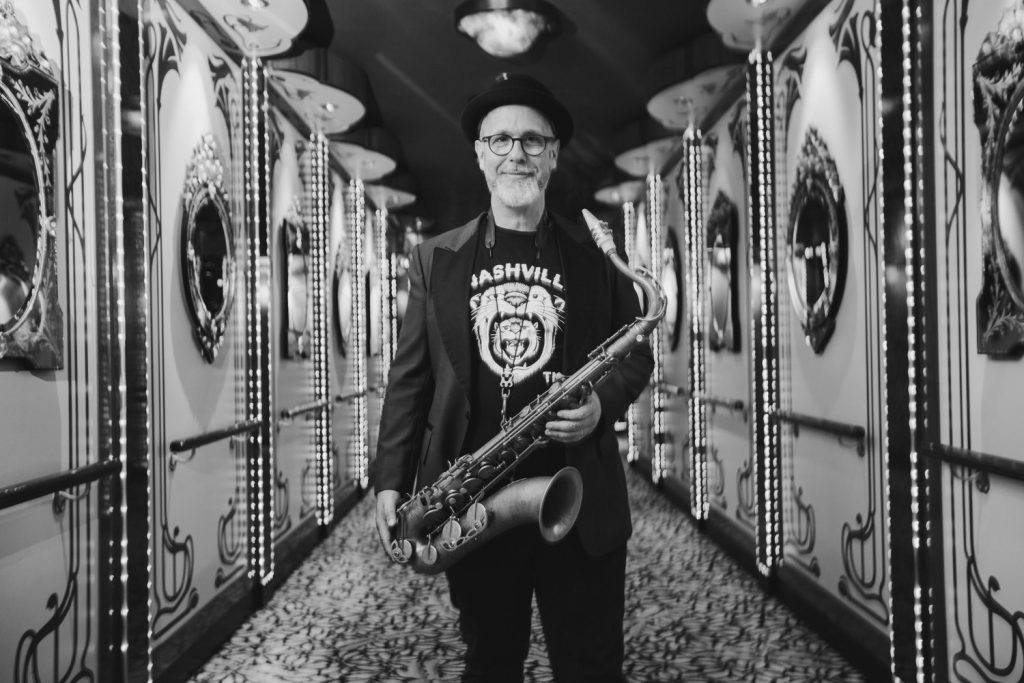
In addition to The Mavericks, Max has recorded and performed with a wide variety of acts including Buddy Guy, Christone “Kingfish” Ingram, Gregg Allman, Taj Mahal, Frankie Valli, Lionel Richie, Yo-Yo Ma, and many more. He’s appeared on the Grammy Awards, Good Morning America, The Tonight Show, Conan, Late Night with Seth Meyers, PBS Great Performances, and the CMA, CMT, ACM, and AMA awards. His playing can also be heard on the popular TV shows Grey’s Anatomy and True Detective. It’ll be 12 years ago this year his journey as a member of the band’s “Fantastic Five” started, and exactly seven years ago this month The Mavericks went to Cuba to shoot their PBS special, Havana Time Machine. Their trumpet player canceled at the last minute, tasking Max with finding one in Havana. He heard Lorenzo Molina Ruiz playing in a jazz club, signed him on for the show, and the rest is history. Lorenzo has been in Nashville with the band ever since.
On The Mavericks’ new album, Moon & Stars, Max contributes to nine out of ten tracks. “There are moments where the horns are very prominent, and moments when they’re a supporting cast. My favorite story from the record, though, is that there’s a few tracks that could be interpreted in different ways. They could be Memphis soul. They could almost be disco. That’s the beauty of the Mavericks. Obviously, Raul is so versatile. But we tried and failed to get a good horn track on a few tunes. You know, I had ideas and they just weren’t quite sitting the way that they needed to. We had a day off in Minneapolis, and Raul and I sat on the bus and he just sang what he was hearing in his head. So I held onto that. And then we were driving home from that tour, and we lost all of the power on the bus. I had a backup battery, and it was this glorious moment where for eight hours, nothing else worked but the tool that I used to write the horn parts. So I just sat there and wrote all of these horn parts knowing that I really had one more session to get these. We had a session booked two days after we got home. It wasn’t working, so Raul and I got together.”
The fruits of those eight hours that Max spent writing all the horn parts in pitch-black solitude ended up on a lot of the record. “I got this great gift of silence. The only one on the bus, too. I was able to knock this stuff out. It’s hard to get, because we’re 19 people on the road.” But there is another reason Moon & Stars means a bit more to him than previous records. “Paul Deakin, our drummer, had an infected heart valve. He has an artificial valve. Eventually those run their course. Paul started feeling poorly at a show in Virginia, and kept feeling poorly; got home, went to Vanderbilt and they said, ‘You’re not leaving.’ They opened up his chest, replaced his valve. It was a very significant surgery.
“You never know what the outcome is going to be. Part of the real joy of this record, for me, is that five or six tracks were cut after Paul recovered from his surgery. He’s a great friend, and he’s one of the founders of the band. He sort of created this incredible opportunity for me as a musician. I think some of the best playing of his career is on this record. Obviously they’ve had tremendous success. You’re talking about a band that’s won a bunch of Grammys.
“I think Paul has some really truly delightful moments on this record. The fact that he got to finish the work Is a real joy. The thing I love about the record is this beautiful fellowship. There’s nine of us on stage and the opportunity to work through creation with eight of your friends – Julio (Diaz) and Lorenzo, the two trumpet players, had a lot of great insights into the horn arrangements. Raul always has brilliant ideas. It’s this opportunity that’s very rare in life, which is that you can try something and fail, and try something again and fail; and having the opportunity to work through something is rare.”
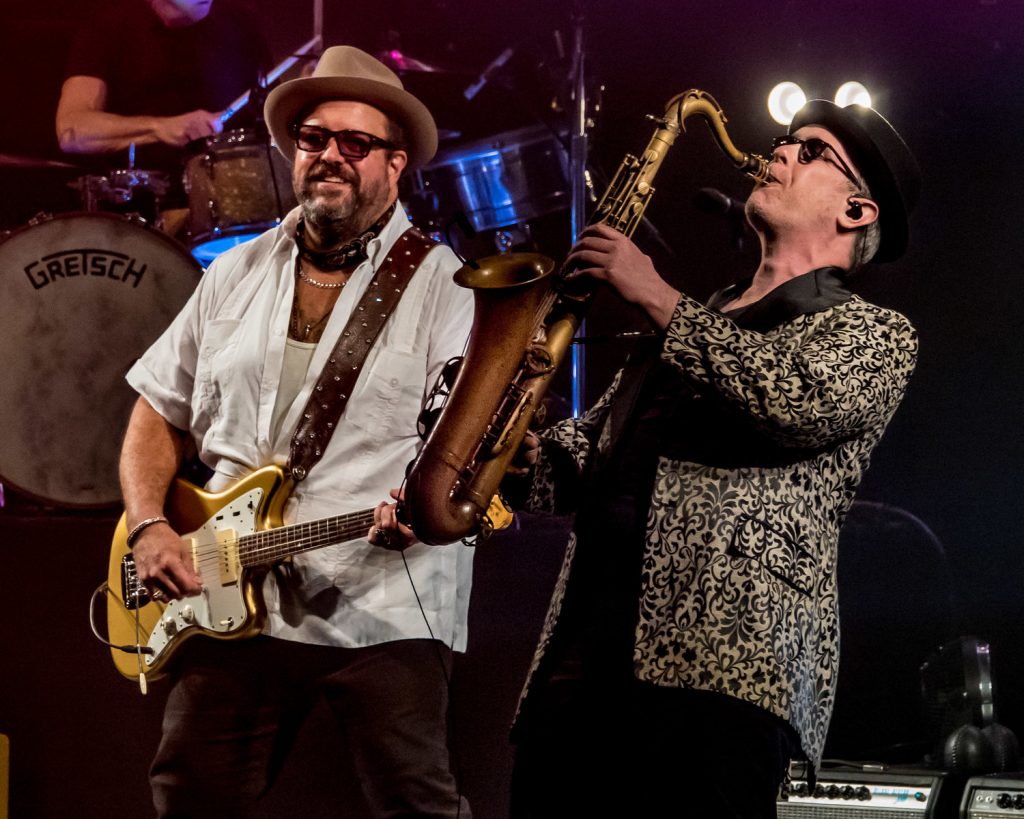
Some of the songs were written years ago, but according to a band statement, “they weren’t ready. Or maybe we weren’t. We are now.” The new album is, to wit, signature Mavericks, as evinced in the title track which nimbly blurs the lines between classic country ballad and danceable Tejano waltz. A burning ring of fire. But it also marks an important stage in their continued evolution, the band sharing songwriting credits with special guests including Bernie Taupin (who recently received the Gershwin Prize for Popular Song alongside lyricist partner Elton John).
“Raul never stopped evolving. He never stopped listening. And he didn’t limit himself to what the band was in the nineties. They were a phenomenal group, obviously. Those records are triumphs, but Raul kept growing and kept working at his craft when The Mavericks weren’t a band. He did his many years as a solo artist and came back with this whole new sonic landscape.”
Max describes the title track, co-written with Seth Walker and featuring the salient vocal stylings of Sierra Ferrell, as “a real epiphany.” Enthusing, “That is her first take. She went in, listened, and that is basically what happened. It’s a pretty extraordinary moment.
“I played on her guitar player’s (Oliver Bates Craven) record, and they happened to be playing at the Lensic in downtown Santa Fe. I reached out to Oliver, he got us tickets, and we hung out with him after the show. I met Sierra, met the rest of the band. We happened to be recording in Santa Fe. They had a day off the next day, so we said, ‘Why don’t you guys come to the studio?’ Everyone knew how brilliant they were. They showed up, and we happened to be recording that tune. Sierra is singing, obviously brilliant. It’s Oliver playing fiddle. So it’s Sierra and her band with our band. The odds of that ever happening are so small, but it did. The tune is actually sort of a funny one, because (part of) it is in a very strange time signature. Everyone did their job so well that you don’t necessarily notice. It’s 1-2-3, 1-2-3-4, 1-2-3, 1-2-3-4.”
The Mavericks are set to begin their European & UK tour on April 21st. Upon their return home to continue their tour in the States, the album release will be held in Austin, Texas. Max also shared with me that they will do a string of dates with Dwight Yoakam later this year. For a full tour schedule, head here. “We just keep working, which is an unbelievable blessing in this era of disposable art. We tour all of Canada, the whole United States. We just keep going. The Mavericks are the little engine that could in a lot of ways.”


